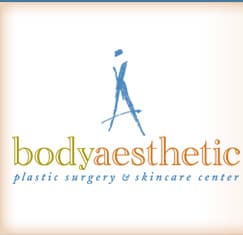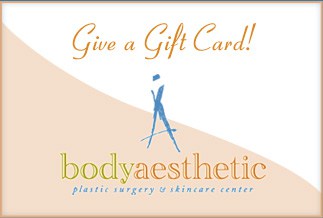A “Mommy Makeover” is designed to address the changes of a woman’s body that have occurred as a result of pregnancy. This can include changes to the face, breasts, trunk, and extremities. There is not specific procedure or group of procedures that will address all of the issues caused by pregnancy. Every person will have different changes that they see during pregnancy, so the treatment options will vary according to your specific issues.
Mommy Makeover Facial Treatments
One of the more common facial issues is hyperpigmentation of the facial skin (malar mask of pregnancy) due to estrogen fluctuations during pregnancy. Typically, the first step to address skin issues is to start a good skin care regimen with physician strength skin care products. Both Dr. Boswell and our licensed aesthetician will discuss the different products that are available and how they would help you to improve your skin. Retinoids are effective in reducing wrinkles and can help even out the skin’s coloration, particularly when combined with skin lightening agents, such as, kojic acid or hydroquinone. Alpha hydroxy acids are mild fruit acids that help with exfoliating the skin and allowing skin care products to penetrate better. For more aggressive treatments, chemical peels (trichloroacetic acid or glycolic acid) or light based therapies (Clear & Brilliant laser, erbium micropeels, broad band light) can be utilized.
For patients that are in their 30’s (occasionally late 20’s), they may start to see the benefit of injectable treatments like Botox and fillers. Patients also see significant weight shifts during pregnancy and they can sometimes benefit from fillers to restore the volume that is lost in the cheek region. Juvederm and Restylane are two of the more common hyaluronic acid fillers that are used. Lack of sleep can lead to lines around the eyes, such as, “frown lines,” “crow’s feet,” or “smile lines.” These can easily be treated with any of the wrinkle reducing neuromodulators like Botox, Dysport, or Xeomin.
Breast Enhancement with Mommy Makeover
The effects of pregnancy and breast feeding can be very dramatic on a patient’s breasts. The breasts become fuller due to estrogen and milk production, which causes the skin to stretch and stretch marks to form. After a woman stops breast feeding, the glandular tissue of the breast can decrease in size to a point where the breasts are less full than they were prior to pregnancy. This is called “post-partum involution” and now patients are left with two issues: skin that has been stretch out and less volume to fill up the stretched out skin creating a drooping appearance of the breasts. If there is significant ptosis (or drooping) of the breast, then a breast lift (mastopexy) can help to remove the excess skin, lift the nipple and areola back the appropriate position, and help fill out the upper part of the breast. If the patient has lost a significant amount of volume to the breast, then adding volume back in the form of a breast implant (breast augmentation) can help to correct the volume loss. Patients with post-partum involution frequently benefit from a breast augmentation after pregnancy. A common saying that our patients make about their breasts is that, “I just want back what I had prior to my pregnancy.” Some patients lose enough volume to their breasts combined with a significant amount of drooping, so that they will achieve their maximum benefit by having a breast lift and a breast augmentation, which is called an augmentation mastopexy. Finally, some patients end up with breasts that are larger (and droopier) than they were prior to pregnancy. A breast reduction will address both issues by removing skin and breast tissue to both lift the breasts and decrease the volume of the breasts. Some stretch marks are removed during a breast reduction or breast lift, but are not effective and reliable treatments for reducing stretch marks of the breasts.
Tummy Tuck with Mommy Makeover
The most pronounced and obvious effect of pregnancy is the expansion of a woman’s waist line. This causes the skin of the anterior abdomen to stretch and can cause separation of the rectus abdominus (“six pack”) muscles. This leads to loose skin below the belly button and frequent stretch marks of this skin along with the lower abdominal bulge caused by the separation of the rectus muscles. Diet and exercise will help with reducing the amount of abdominal fat that a patient has, but they will not help with tightening the skin, removing stretch marks, nor will it help bring the muscles back together. An abdominoplasty (tummy tuck) will remove the stretch marks, excess skin, and fat below the belly button. As part of an abdominoplasty, the rectus muscles are sutured back together along the midline to correct the separation of the muscles. This gives the effect of creating an internal corset that helps smooth the lower abdominal bulge and cinching the waist line (think of wearing a corset underneath your skin). If a patient has excess fat of the love handles, liposuction is commonly combined with an abdominoplasty. For a woman, the “ideal” hip-to-waist ratio is 0.7, meaning that the waist should be about 70% of the size of the hips (think of an hour glass figure). Males tend to have a hip-to-waist ratio that is closer to 1:1, meaning that hips and waist have a similar circumference. Following a pregnancy, women tend to have more fat in the waist region which gives them a more masculine appearance. This is where liposuction of the “love handles” can be combined with an abdominoplasty to help improve the hip-to-waist ratio that was lost during pregnancy. Occasionally, a woman will have some excess fat of their abdomen and/or waist, have good contraction of the skin after pregnancy, and have minimal separation of their rectus muscles. These patients may benefit from liposuction of the trunk region rather than an abdominoplasty.
Effects on the extremities and treatment options:
Unless a patient has a fairly drastic weight gain, the skin of the arms and legs typically does not stretch out to a significant degree. It is uncommon for a patient to see much benefit from a skin excision procedure of the arms (brachioplasty or arm lift) or the legs (thighplasty or thigh lift). Most patients will see localized deposits of fat that can be addressed by liposuction with the inner and outer thighs being the areas that are most frequently treated. Cellulite is an issue for almost all women after pregnancy. There are multiple causes of cellulite. One of the most popular ideas is that cellulite is created by fibrous bands of collagen that attach the undersurface of the skin (dermis) to the fascia of the muscle which tether the skin and create “dimples” when patients become more obese. Another thought is that the subdermal fat can invade into the dermis of the skin causing the skin to become thinner and bulge out which created the “dimpled” appearance. Sometimes liposuction can help with cellulite (and sometimes make it worse). There are some energy-based devices and injections to improve cellulite, but these treatments need more evaluation. In general, there are not any creams that safely and reliably treat cellulite. Varicose veins are common after pregnancy and these are more prevalent on the left leg. The can be treated with sclerotherapy (injections), lasers, or endo-venous laser treatments.
Which procedure is the best for me?
Every patient and every pregnancy is different, so there is not a single answer for all patients. The most common issues and treatments include:
- Facial changes that can be addressed non-surgically in the form of skin care, fillers, and Botox.
- Loss of volume of the breast the is addressed with a breast augmentation and/or drooping of the breast that can be treated with a breast lift (mastopexy)
- Abdominal bulge with skin and fat excess treated with an abdominoplasty (tummy tuck)
Patients frequently one or more of these issues and they typically can be addressed in a single procedure. During your consultation with Dr. Boswell, you will be able to over all of the issues that bother you so that we can generate a comprehensive treatment plan.




















